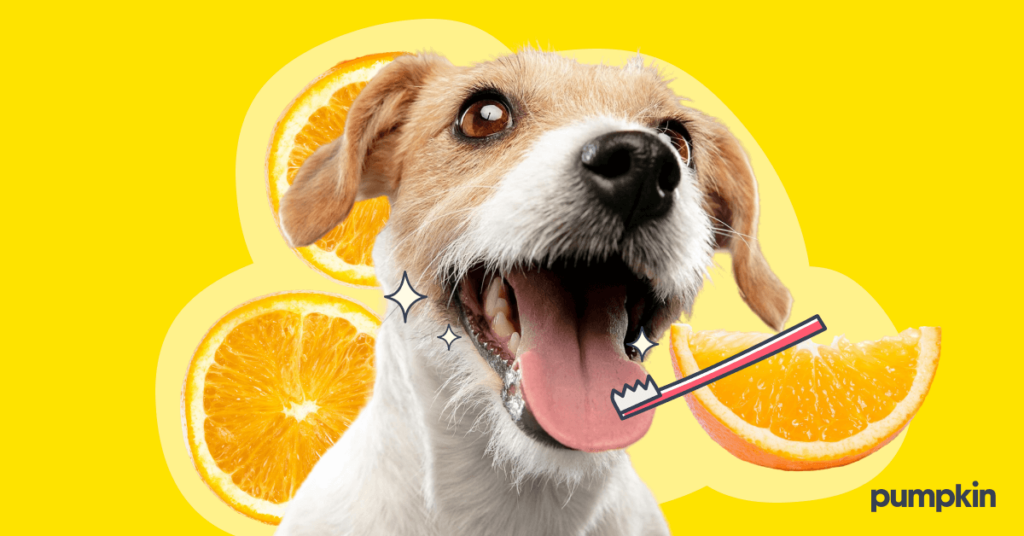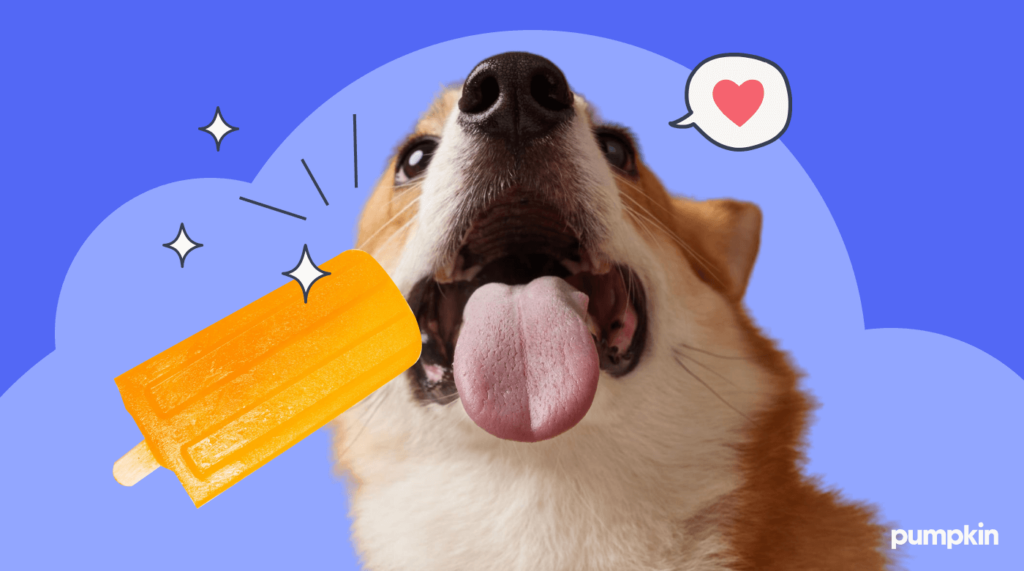Key Points:
- Yes, dogs can eat oranges in moderation, but the peel and seeds should be removed.
- Oranges provide dogs with vitamin C, potassium, and fiber.
- Too many oranges can lead to an upset stomach in dogs due to high sugar.
Most people love the sour-sweet taste of fresh-squeezed OJ and juicy orange slices. But not all dogs will appreciate the sharp, tangy taste of citrus. If your dog does like to chomp on the occasional orange slice — or if they’ll gobble up any snack they can find, no questions asked — then you need to be able to answer a simple question: Can dogs eat oranges safely? Or, like grapes, onions, and chocolate, are they toxic to pups?
Not all human foods are fit for your furry foodie. Luckily, if oranges are on the menu, you can safely share a few slices.
This common household fruit has many nutrients that benefit your dog’s health. So, if they enjoy the tangy taste, go ahead and add some zest to your pup’s day.
What are the benefits of sharing oranges with dogs?
Forget those pricey, artificial dog treats. Open your fridge and you may find a more affordable and healthier snack — oranges. In moderation, they are a nutritious addition to your dog’s diet.
Nutrients and vitamins
Oranges, and all citrus fruits, are rich in vitamin C and potassium. In fact, an orange has more potassium than a banana.
They’re also loaded with fiber, low in sodium, and contain thiamine, folate, and antioxidants — important nutrients in a dog’s diet.
- Vitamin C: A powerful antioxidant, vitamin C supports a dog’s health by reducing inflammation and supporting the immune system.
- Potassium: This important mineral keeps your dog’s kidneys functioning normally. It also supports efficient heart, muscle, and digestive function.
- Manganese: Manganese supports healthy bones and cartilage in joints. It also supports your dog’s energy levels.
- Dietary fiber: The soluble fiber in fruit encourages the growth of beneficial gut bacteria and helps with stool consistency and regularity.
A natural breath freshener
As much as we love our dog’s kisses, let’s be real — sometimes their breath could use a little help. Oranges may be the answer.
The citric acid in oranges helps combat bad breath in dogs by neutralizing odor-causing bacteria. So, offering your dog a few slices of oranges after their meal can help freshen their breath naturally.
However, oranges aren’t a substitute for regular brushing and professional doggie dental care. You’ll still need a regular oral hygiene routine to combat bad breath.

A low-calorie treat
Oranges are considered a low-calorie treat for dogs. They’re also low in fat, making them a healthier alternative to many commercial dog treats. Their high water content also makes them a hydrating snack for dogs.
What are the risks of feeding your dog oranges?
Although oranges are healthy snacks, be mindful of these potential risks.
High sugar content
There is a moderate amount of natural sugar in oranges, which can raise a dog’s blood sugar. (If your dog is diabetic, check with your veterinarian before sharing oranges.) In any case, practice moderation here.
Choking hazard
Although orange peels and seeds are not toxic, they can cause choking or blockage problems if given in large pieces. Orange peel can easily get lodged in your dog’s throat or intestines.
Always peel the orange and try to remove all seeds before giving it to your dog. Cut it into small, bite-sized pieces to avoid choking.
Upset stomach
The orange peel is tough to digest, and the rind contains oils that could potentially cause stomach upset in your dog. Some dogs may be more sensitive to citrus fruits than others. Introduce oranges gradually and watch for any signs of a sore tummy.
Allergic reaction
While rare, dogs can be allergic to oranges. They could experience mild symptoms, like itching and skin irritation, or more severe reactions, such as vomiting and diarrhea.
If you notice any signs of an allergic reaction, contact your vet immediately.
Having a pet insurance plan in place can help ease the cost of unexpected vet visits in the future. Find out how Pumpkin pet insurance plans can help dog parents afford the best care.
How to feed your dog oranges safely
Always remove orange peels and seeds before sharing this fruit with your pup. You can keep the pith (the white part between the rind and the orange flesh), as it contains antioxidants and fiber.
Slice the orange into small, bite-sized pieces and offer them to your dog a little at a time. Treats, including oranges, should make up no more than 10% of your dog’s daily calorie intake to maintain a healthy weight.
If your dog is diabetic or overweight, check in with your vet before sharing new treats. This fruit is a healthier snack than a commercial treat, but your vet knows what’s best for your dog.
Finally, remember that not all dogs will appreciate the tangy taste of citrus fruits.
Creative ways to serve oranges
If you like to make your own treats, try one of these fun and healthy snack ideas:
- Refreshing smoothie: Add orange segments into a plain yogurt smoothie with other fruits and veggies like blueberries, cranberries, green beans, or bananas. The probiotics in yogurt will promote healthy gut bacteria.
- Frozen orange pops: Freeze orange segments or diluted orange juice in ice cube trays for an occasional treat. It’s perfect for hot days and teething puppies.
- Veggie Mix: Throw in some veggies with oranges. Green beans are high in water content and go well with orange pieces. This is a great way to add bulk to your dog’s treats without adding extra calories.
- Orange-infused water: Add a few orange slices to your dog’s water bowl for a refreshing twist. The citrusy scent and flavor can encourage dogs to drink more water.

Oranges are a zesty treat for your dog
The next time you’re enjoying an orange and your dog gives you that look, you can confidently toss them a slice. Oranges are a nutritious and tasty snack for your dog, filled with vitamins, minerals, and antioxidants.
Just remember to peel and seed them first so your pup can enjoy their treat safely. A few segments are plenty to keep your dog happy and healthy.
Pet Pro Tip: If you have a dog that is prone to ‘snacksidents’ – you should consider getting a dog insurance plan as soon as possible. It can help you afford the best care in the future by covering eligible vet bills for digestive illnesses, toxic ingestion, and more.
FAQs
- https://www.mercy.net/newsroom/2022-12-21/more-potassium-orange-or-banana
- https://www.petmd.com/blogs/nutritionnuggets/jcoates/2013/may/microminerals-importance-in-dog-diet-30272
- https://www.akc.org/expert-advice/nutrition/benefits-high-fiber-dog-foods/
- https://www.petmd.com/blogs/nutritionnuggets/dr-coates/2015/february/all-fiber-not-same-32501
- https://www.akc.org/expert-advice/health/puppy-diarrhea/
- https://www.akc.org/expert-advice/nutrition/how-many-treats-can-dog-have/




